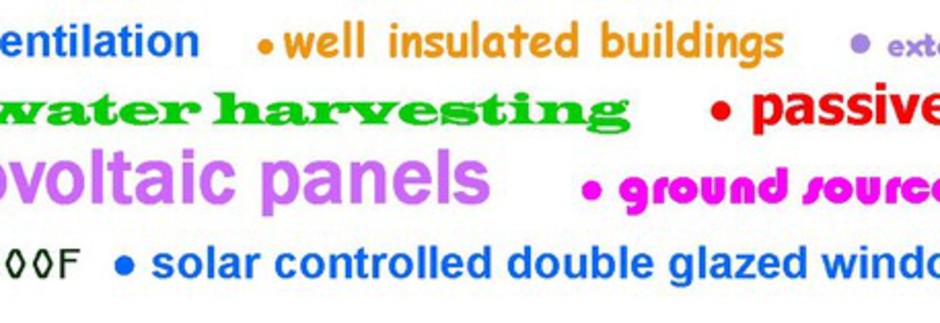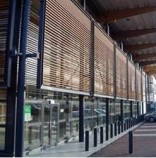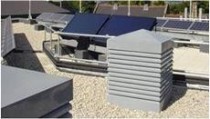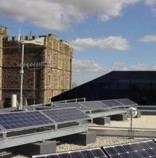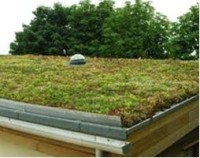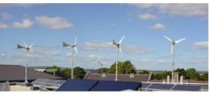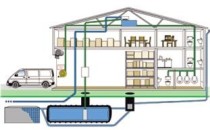GREEN DESIGN - SUSTAINABLE DESIGN OPTIONS
NATURAL VENTILATION
Incorporation of natural ventilation system such as Monodraught Windcatcher to eliminate the need for air conditioning. Uses prevailing wind drawn down into the building through a controlled damper arrangement. Used in conjunction with solar shading and opening windows with high performing solar control glass to provide a comfortable building environment with reduced running costs and lower environmental impact.
SOLAR PHOTOVOLTAIC (PV)
Use of PV to provide renewable panels energy system to convert sunlight into electricity. Dependent on scale and location of array of modules, will reduce electricity costs as result of reducing energy consumption from utility supplier.
The systems are clean, emit no pollutants, create no waste and uses no fuel.
SEDUM/GREEN ROOF SYSTEMS
There are various systems available dependent on whether flat or pitched roof and new or existing building. The green roof may offer recreational space or an aesthetic to suit the building environment or location, dependent on vegetation type. An extensive sedum roof is capable of storing large amounts of rainwater thereby reducing flood risk. Green roofs can also offer a high degree of insulation to provide constant temperatures throughout the year.
WIND TURBINES/GENERATOR
Use of small scale wind turbine to generate electricity. Visible reminder of corporate social responsibility. Dependent on wind speed, may provide a significant
contribution towards a building’s energy needs. The energy source is green, renewable and doesn't release carbon dioxide. However, wind power has limited application in urban
environments.
RAINWATER HARVESTING
To integrate a system collecting rain which falls onto the building roof for storage and use as a resource.
The scale of the system can vary greatly but may consist of tanks above or below ground, along with filters and pumps. If the building has a large roof, then there may be a potential to flush toilets and hence reduce running costs. A volume of water is also kept out of the storm management system and hence reduce flood risk.
